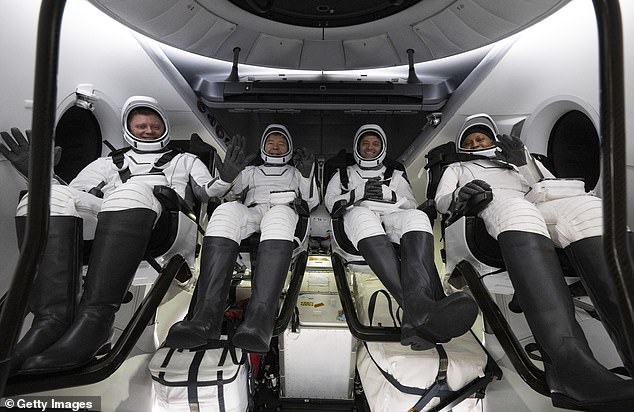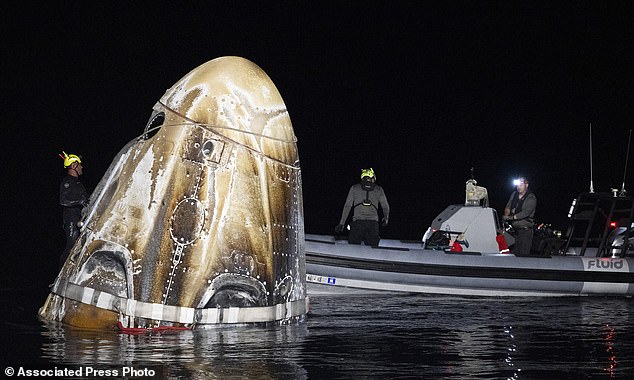NASA astronaut reveals what happens when you squirt ketchup in low gravity – as fans call his demonstration ‘awesome and gross’
From sleeping to exercising to preparing food, nothing is easy for people aboard the International Space Station (ISS).
To demonstrate the bizarre nature of a usually simple kitchen task, NASA astronaut Matthew Dominick has shared a video of himself squirting ketchup.
In the video, posted to
As it builds up, the ketchup forms a peculiar red ‘tower’ in his mouth, which he quickly slurps up.
In his X messageDominick – who has since left the ISS and returned to Earth on Friday – said: “This one goes out to all the ketchup lovers out there.
‘Everyone I’ve shared it with either loves it or hates it. Nothing in between.
‘Interesting scientific things are also happening.’
In the video, posted to
One
Someone else posted: ‘THIS is the kind of science we should be doing up there!’
Another said: ‘That’s awful, all that sugar!’
The ISS is about 400 kilometers above Earth, so the gravity on board is about 90 percent of what it is on the surface of our planet.
Because of this microgravity environment, the ketchup is not pulled down when squeezed from the bottle, resulting in a satisfyingly straight line.
On X, Dominick said he “had fun” with his crewmates before making the return trip to Earth on Wednesday evening.
He traveled home aboard a SpaceX Crew Dragon spacecraft, along with fellow NASA astronauts Michael Barratt and Jeanette Epps, plus Roscosmos cosmonaut Alexander Grebenkin.
Their SpaceX craft finally crashed into the Gulf of Mexico near Florida at 3:29 a.m. EDT (8:29 a.m. BST) on Friday.

This NASA image shows Roscosmos cosmonaut Alexander Grebenkin (left) NASA astronauts Michael Barratt (second from left) Matthew Dominick (second from right) and Jeanette Epps (right) in the SpaceX Dragon Endeavor spacecraft aboard the SpaceX recovery ship MEGAN, shortly after landing in the Gulf of Mexico off the coast of Pensacola, Florida on October 25, 2024

This photo from NASA shows support teams working around the SpaceX spacecraft shortly after it landed, in the Gulf of Mexico off the coast of Pensacola, Florida, Friday, October 25, 2024
The three Americans and one Russian should have been back two months ago, but their return home was delayed by problems with Boeing’s new Starliner astronaut capsule, which returned empty in September due to safety concerns.
Then Hurricane Milton intervened, followed by another two weeks of high winds and rough seas.
In total, this meant they were in space for almost eight months, marking the longest Crew Dragon mission to date.
Still aboard the ISS are Starliner test pilots Butch Wilmore and Suni Williams, whose own mission on the beleaguered Boeing craft lasted from eight days to eight months.
Also on board are two astronauts launched by SpaceX four weeks ago: NASA’s Nick Haag and Aleksandr Gorbunov of Roscosmos.
The foursome will stay there until February next year.
